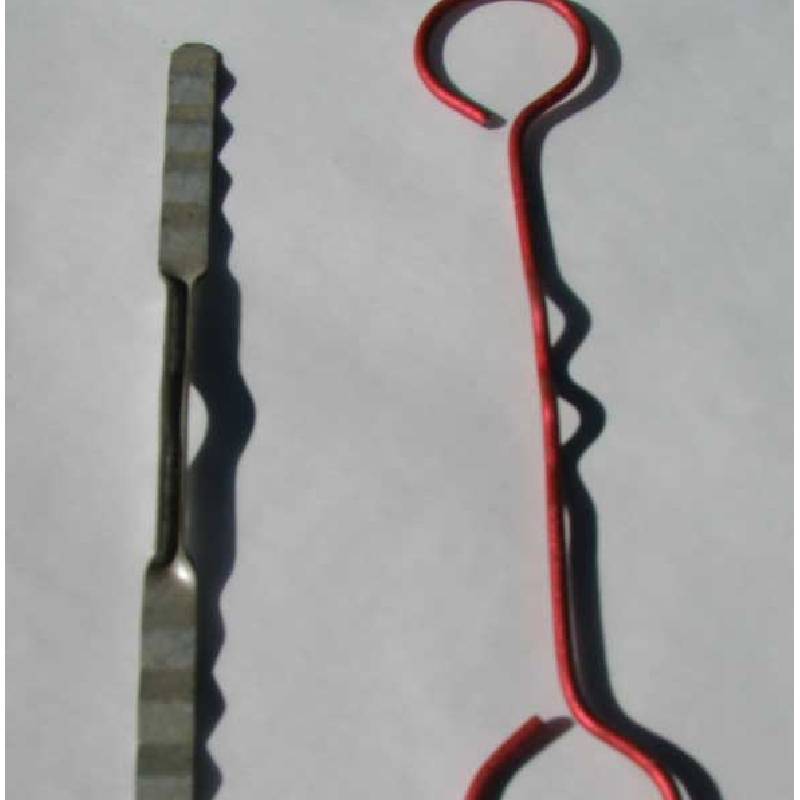
- Mobile Phone
- +8613931874955
- sales@cntcmetal.com
Understanding Collar Jointed Wall Ties for Enhanced Structural Stability
Understanding Collar-Jointed Wall Ties A Comprehensive Overview
Collar-jointed wall ties are an essential component in modern masonry construction, playing a critical role in the structural integrity and stability of buildings. A wall tie, in general, is a metal device used to connect two masonry walls, often in cavity wall constructions. The collar-jointed variant is characterized by its unique design, which enhances its performance in various building conditions.
The Design and Functionality of Collar-Jointed Wall Ties
The collar-jointed wall tie features a distinctive collar design that adds strength and resilience to the tie. This collar is a metal ring or flat section that creates a more secure connection between the tie and the masonry walls. The primary function of these ties is to provide lateral support to the walls, ensuring they remain stable and aligned under various load conditions, including wind pressure and internal stresses.
One of the critical advantages of collar-jointed wall ties is their ability to accommodate differential movement between the inner and outer walls of a cavity wall. As buildings settle and materials expand and contract due to temperature changes, the collar-jointed ties facilitate this movement while maintaining the structural integrity of the walls. The collar design helps distribute stresses evenly, reducing the risk of cracking or structural failure.
Material Composition
Collar-jointed wall ties are typically made from durable materials such as stainless steel or galvanized steel, which provide excellent resistance to corrosion. The choice of material is crucial, especially in coastal or industrial areas where exposure to moisture and chemicals can accelerate deterioration. High-quality materials ensure that the wall ties have a long lifespan, contributing to the overall longevity of the building.
Installation Process
The installation of collar-jointed wall ties requires careful planning and execution. They are usually installed during the construction phase, embedded in the mortar joints of the masonry walls. Proper spacing and alignment are essential to ensure that the ties perform effectively. Building codes and regulations often dictate the number and placement of wall ties, ensuring that they provide adequate support based on the building’s height, load, and environmental conditions.
collar jointed wall ties

Benefits of Collar-Jointed Wall Ties
1. Enhanced Stability The collar design of these ties provides superior anchoring, which enhances the overall stability of masonry walls, especially in tall or heavy structures.
2. Reduced Risk of Cracking By accommodating differential movements, collar-jointed wall ties help minimize the risk of cracking in masonry walls, which can lead to costly repairs.
3. Versatility These ties can be used in various applications, including residential, commercial, and industrial buildings, making them a versatile choice for architects and engineers.
4. Ease of Maintenance Given their durable material composition and corrosion resistance, collar-jointed wall ties require minimal maintenance, allowing for long-term structural reliability.
Conclusion
Collar-jointed wall ties are a vital component in modern masonry construction, providing essential support and stability. Their unique collar design allows for the accommodation of movement within the structure, reducing the risk of damage and enhancing the safety of buildings. As construction technology advances, the importance of reliable and efficient building components like collar-jointed wall ties cannot be overstated. They not only contribute to the structural integrity of buildings but also play a crucial role in building longevity and safety, making them a preferred choice among architects and builders alike.
Understanding the benefits and functionalities of collar-jointed wall ties is essential for anyone involved in construction, renovation, or architectural design, ensuring that structures are built to withstand the test of time.
share:
-
Wall Ties for Concrete: Invisible Guardians of Building Structural StabilityNewsAug.08,2025
-
Timber Frame Wall Ties: Stable Bonds for Load TransmissionNewsAug.08,2025
-
Stainless Steel Woven Wire Mesh: A versatile material from boundary protection to functional supportNewsAug.08,2025
-
Powder Coat Coil Springs: Creating peace of mind and reliability with sturdy protectionNewsAug.08,2025
-
Floor Standing Sign Holder: A Powerful Assistant for Flexible DisplayNewsAug.08,2025
-
Binding Iron Wire: An Invisible Bond for Building StabilityNewsAug.08,2025
-
Yard Sign Stakes: Reliable Guardians of Outdoor SignsNewsAug.04,2025



















